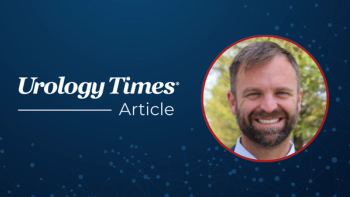
Oral antiandrogen safe, well tolerated in phase II trial
ARN-509, a novel oral antiandrogen, was safe, well tolerated, and showed promising efficacy in men with high-risk, non-metastatic castration-resistant prostate cancer (CRPC) in a phase II study, reported Neal D. Shore, MD.
New Orleans-ARN-509, a novel oral antiandrogen, was safe, well tolerated, and showed promising efficacy in men with high-risk, non-metastatic castration-resistant prostate cancer (CRPC) in a phase II study, reported Neal D. Shore, MD.
Dr. Shore“So far, ARN-509 appears to have robust activity in this patient population. It has produced significant and sustained declines in PSA, and after a median follow-up of 24 months, the median time to metastasis-free survival has not yet been reached,” said Dr. Shore, medical director of Carolina Urologic Research Center, Myrtle Beach, SC.
Read:
“The safety and tolerability of ARN-509 in the phase II study were also very favorable and consistent with the findings in an earlier phase I trial conducted in men with metastatic CRPC. Now, a global placebo-controlled phase III study of ARN-509 in men with documented metastatic-free CRPC is underway,” added Dr. Shore, who presented the phase II findings at the AUA annual meeting in New Orleans.
The phase II trial had an open-label uncontrolled design, and all men were treated with ARN-509, 240 mg daily. Eligible participants had to have no radiographic evidence of metastases based on central review of imaging, although metastases to pelvic lymph nodes <3 cm below the iliac bifurcation were allowed. In addition, they had to be at high risk for progression based on having a PSA ≥8.0 ng/mL within the previous 3 months and/or a PSA doubling time (PSADT) ≤10 months.
A total of 51 men were enrolled in the study between November 2011 and June 2012, but four men were found to have metastatic disease and were excluded from the efficacy analysis. The population had a median age of 71 years, baseline ECOG performance status was 0 in 76% of men, and 57% had a Gleason score ≤7. Median PSA at enrollment was 10.7 ng/mL (range, 0.5 to 201.7) and PSADT was ≤10 months in 45% of men. All men had been treated previously with a luteinizing hormone–releasing hormone analog, and 41 (80%) also received a first-generation antiandrogen.
Follow-up evaluations included monthly measurement of PSA and tumor imaging every 4 months. At the time the analysis was performed, 18 men (35%) remained in the study. Most discontinuations (11/33) were due to disease progression.
Have you read:
Primary endpoint reached in 89%
A
Dr. Shore said the investigators were very happy about the findings of the safety analyses.
Also see:
“The rates of adverse events associated with ARN-509 in this population are very low in comparison to what has been reported with other androgen receptor signaling inhibitors,” he told Urology Times.
Fatigue (61%), diarrhea (43%), and nausea (39%) were the most common adverse events, followed by dysgeusia, arthralgia, back pain, and hypothyroidism, which each occurred at a rate of 22%. Almost all of those adverse events were grade 1 or 2, with the exceptions being two cases of fatigue (4%) and single cases each of diarrhea and arthralgia.
There was a 10% incidence of hypertension overall, including two cases that were grade 3/4. Central nervous system adverse events occurred at low rates and were all grade 1 or 2. There were no reports of seizures, sedation, or hallucinations.
Dr. Shore has research and consulting agreements with Astellas, Bayer, Janssen, and Medivation. Several of Dr. Shore’s co-authors have a financial or other relationship with Janssen, Johnson & Johnson, and other pharmaceutical companies.
You might also like:
Newsletter
Stay current with the latest urology news and practice-changing insights — sign up now for the essential updates every urologist needs.


















